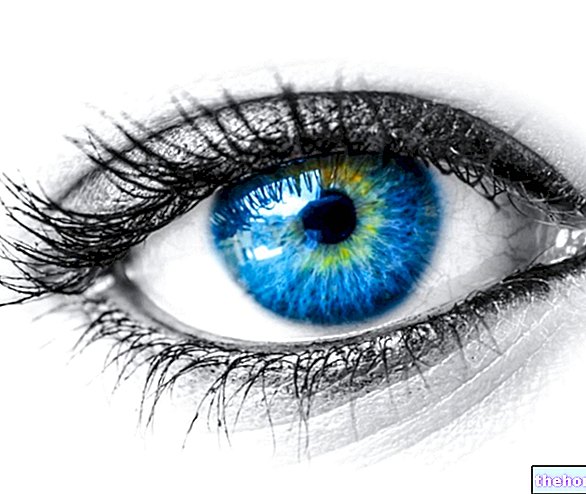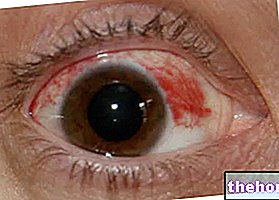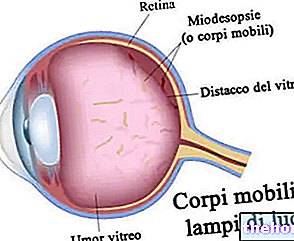Definition
In the medical field, the "sty is an" infection that appears as a swelling in the eyelid, the expression of an acute inflammatory process affecting the sebaceous glands of the eyelashes.

The sty appears as a sort of rounded pimple or boil, comparable to a rather solid abscess, which appears on the outer wall of the eyelid or (less frequently) on the inner wall.
In addition to being an aesthetic discomfort - albeit, fortunately, temporary - the sty is often accompanied by pain, swelling and redness limited to the eyelid.
Causes
Poor personal hygiene is one of the most frequent factors predisposing styes: in fact, poorly cleansed skin is more prone to bacterial infections, especially those sustained by staphylococci. The bacteria, in contact with the eye, penetrate into the follicles creating infection and inflammation.
Photo Orzaiolo


The contagion occurs in a rather simple way: in fact, only the contact of dirty hands with the eyes is sufficient to allow the staphylococcus to create damage, thus favoring the formation of sty. It is observed that individuals suffering from blepharitis (a chronic inflammation that occurs at the level of the free edge of the eyelid) present a greater risk of contracting sty.
Symptoms and Classification
For further information: Styes Symptoms
The sty manifests itself quite painfully, even if, normally, it regresses in a handful of days: from medical statistics, it is observed that the sty disappears in 2-4 days, even if in some particularly sensitive patients the recovery occurs in a longer period. Growing at the eyelid level, the sty could obstruct the vision (rare cases): in such situations, the affected individual is not able to fully open the eye, since the size and weight of the sty can hinder its "opening.
We speak of external sty when the inflamed and pus-filled boil grows along the eyelid edge due to a bacterial insult directed to the follicle: the one just described is the most common variant of sty, in which the patient complains of a solid, painful and inflamed, initially red, then yellow (index of pus accumulation).
Instead, we speak of internal sty when the target of the staphylococcus is the meibomian glands (with excretory activity, located on the internal transverse side of the upper eyelid), close to the eyeball. In severe cases, untreated sty can evolve into a chalazion, a painful cyst that grows in the eyelid due to obstruction of the excretory duct of the meibomian gland.
Indicative symptoms of styes: when to contact your doctor
- Perception of pain on pressure or rubbing of the eye
- Abnormal tearing
- Hypersensitivity to light
- Formation of small pimples on the eyelid
Treatments and Drugs
For further information: Styes Remedies
In most cases, the sty tends to self-resolve in a few days: it is observed that a good part of patients recover completely in 7-14 days, without reporting any damage in the long term, thus reacquiring the complete functionality of the eye. .
The pus accumulated inside the sty tends to burst by itself, purging a modest amount of yellowish liquid: as you can guess, the sty must NOT be "burst" with the hands, rather you can shorten the healing time by applying more times a day warm compresses directly on the infected eye. The direct heat, in fact, in addition to relieving pain, promotes the spontaneous elimination of pus. It is advisable to repeat the packs three or four times a day, taking care to keep a damp cloth on the eye for 5-10 minutes for each application.
Sometimes, the doctor extrapolates the eyelash from which the sty has developed: this practice, however, is not very appreciated by the patient, because it is moderately annoying; when the pus does not come out despite the hot compresses, the doctor can insert the tip of a needle or a small scalpel directly into the follicle. This practice should only be carried out by experienced doctors: the do-it-yourself removal of the sty with a needle could have serious consequences for the eye and eyelid.
Some patients can be treated with specific drugs, aimed at eradicating staphylococcus: for example, erythromycin, for topical application, is one of the most used drugs for this purpose.
To prevent the spread of infection, it is recommended not to use towels previously used by sty patients, and to always wash your hands thoroughly before touching your eyes.
To be continued: Drugs for the Treatment of "Styes"




























